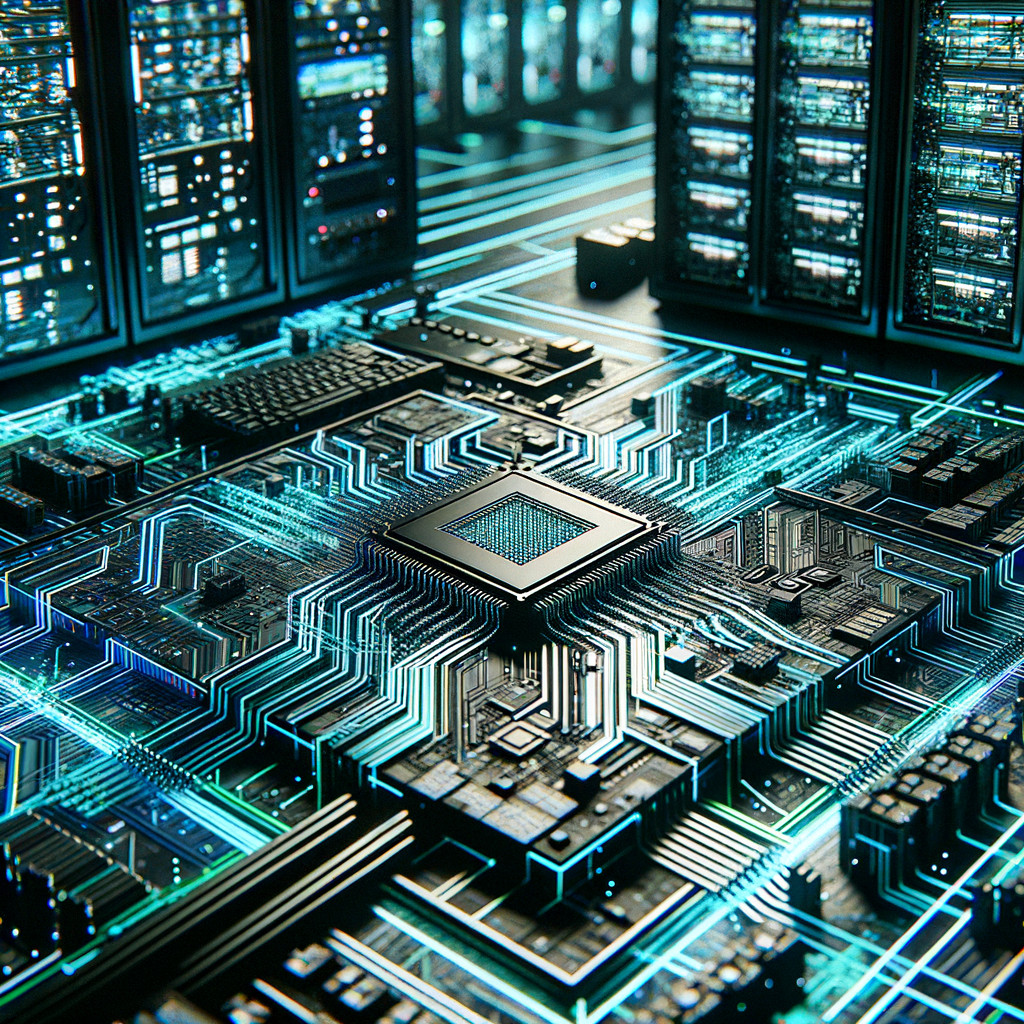Generated by Contentify AI
Introduction
Machine learning has revolutionized the field of image recognition, allowing computers to analyze and interpret visual data with increasing accuracy. This technology has been employed in various applications, from facial recognition to autonomous vehicles. By utilizing algorithms that can learn and improve from experience, machine learning has significantly enhanced the capabilities of image recognition systems. As a result, businesses and industries are increasingly turning to machine learning for more precise and efficient image analysis.
Unlocking the Power of Machine Learning for Image Recognition
Machine learning has paved the way for significant advancements in image recognition technology. By harnessing the power of algorithms that can adapt and improve with experience, machine learning enables computers to accurately analyze and interpret visual data. This breakthrough has revolutionized various industries, from healthcare to security, by providing more precise and efficient image analysis capabilities. As businesses and researchers continue to explore the potential of machine learning for image recognition, the possibilities for innovation and progress in this field are limitless.
The Basics of Image Recognition
Image recognition has been transformed by the introduction of machine learning techniques. These algorithms have enabled computers to process and interpret visual data more accurately than ever before. By continuously learning from experience, machine learning algorithms have enhanced the precision and efficiency of image analysis in various applications. The potential for innovation and advancement in the field of image recognition through machine learning is vast, with industries across the board benefiting from these technological developments.
Importance of Image Recognition in Various Industries
Image recognition has become a crucial component in a wide range of industries, thanks to the advancements in machine learning technology. By leveraging machine learning algorithms, businesses can enhance their image analysis capabilities significantly. These algorithms allow computers to process visual data with remarkable accuracy and efficiency, opening up new possibilities for applications such as facial recognition, autonomous vehicles, and medical image analysis. The importance of integrating machine learning for image recognition in various industries cannot be overstated, as it enables more precise and reliable decision-making processes based on visual data.
Convolutional Neural Networks (CNN)
Convolutional Neural Networks (CNN) have emerged as a powerful tool in the realm of image recognition. These specialized neural networks are designed to process visual data in a way that mimics the human brain’s ability to recognize patterns and features in images. By using layers of interconnected neurons that apply mathematical operations to input images, CNNs can effectively extract features and learn patterns from complex visual data. This capability makes CNNs particularly well-suited for tasks such as image classification, object detection, and facial recognition.
One of the key strengths of CNNs lies in their ability to automatically learn and adapt to different features of images through a process known as convolution. This process involves applying filters or kernels to the input image to detect specific features such as edges, textures, or shapes. By stacking multiple convolutional layers and integrating pooling layers to reduce spatial dimensions, CNNs can learn hierarchical representations of visual data, enabling them to recognize complex patterns and objects.
The training of CNNs for image recognition typically involves feeding the network with labeled images and adjusting the weights of the neurons through a process called backpropagation. This iterative training process allows the CNN to optimize its parameters and improve its ability to accurately classify and identify images based on the features it has learned.
Overall, the use of Convolutional Neural Networks in machine learning for image recognition has significantly advanced the field by providing powerful tools for processing and analyzing visual data. With their ability to learn complex features and patterns from images, CNNs have become a cornerstone technology in applications ranging from medical imaging to autonomous driving, demonstrating the immense potential of machine learning in revolutionizing image recognition capabilities.
Support Vector Machines (SVM)
Support Vector Machines (SVM) are a fundamental machine learning technique utilized in image recognition tasks. SVMs excel in classifying and analyzing visual data by finding the optimal decision boundary that separates different classes within the image dataset. By maximizing the margin between classes, SVMs can effectively distinguish between various objects and patterns present in images. This capability makes SVMs a valuable tool in image recognition applications, where precise classification and identification of visual elements are crucial. Through their ability to handle high-dimensional data and nonlinear relationships, Support Vector Machines play a vital role in advancing the accuracy and efficiency of image recognition systems.
Overfitting and Underfitting
Overfitting and Underfitting are common challenges faced in the realm of image recognition when applying Machine Learning algorithms. Overfitting occurs when a model learns the details and noise in the training data to the extent that it negatively impacts its performance on new, unseen data. This can lead to inaccuracies and poor generalization of the model to real-world images. On the other hand, Underfitting transpires when a model is too simplistic to capture the underlying patterns and complexities within the image data. This results in suboptimal performance and an inability to accurately recognize and classify images.
To address these issues, techniques such as regularization, cross-validation, and hyperparameter tuning can be employed to optimize the Machine Learning model’s performance for image recognition tasks. By finding the right balance between complexity and generalization, models can achieve better accuracy and robustness in recognizing and interpreting visual data. Overcoming overfitting and underfitting challenges is essential in leveraging the full potential of Machine Learning for effective image recognition across various industries and applications.
Data Quality and Quantity
Data Quality and Quantity are fundamental factors that significantly impact the performance and accuracy of Machine Learning models in the realm of image recognition. High-quality data plays a crucial role in training models to recognize and interpret visual information effectively. The quantity of data available for training also plays a pivotal role in the model’s ability to learn diverse patterns and features present in images. Insufficient data may lead to model inaccuracies and limitations in recognizing various visual elements. On the other hand, a large and diverse dataset allows Machine Learning models to generalize better and make more accurate predictions when presented with new images. Therefore, ensuring both the quality and quantity of data used for training is essential in optimizing the performance of image recognition models powered by Machine Learning. Researchers and practitioners continue to explore strategies to enhance data quality through preprocessing techniques and augment datasets to improve model robustness and accuracy in image recognition tasks.
Transfer Learning
Transfer learning is a technique that has gained increasing prominence in the field of image recognition powered by machine learning. This approach involves leveraging knowledge gained from pre-trained models on large datasets and applying it to new, similar tasks. By transferring the learned features and representations from one model to another, transfer learning enables more efficient and effective training of image recognition models, especially in scenarios where labeled data is limited. This technique has proven to be highly beneficial in improving the performance and accuracy of image recognition systems across various domains, from healthcare diagnostics to autonomous vehicles. By capitalizing on the existing knowledge embedded in pre-trained models, transfer learning has become a valuable tool in advancing the capabilities of machine learning for image recognition, driving innovation and progress in this dynamic field.
Generative Adversarial Networks (GANs)
Generative Adversarial Networks (GANs) have emerged as a groundbreaking technology in the realm of image recognition, showcasing the innovative potential of machine learning in creating and analyzing visual content. By pitting two neural networks against each other – a generator and a discriminator – GANs can generate realistic images that closely resemble the training data. This capability has revolutionized various applications in image synthesis, image editing, and computer vision. The power of GANs lies in their ability to learn complex patterns and features within images, enabling them to produce high-quality visual content that is indistinguishable from real images. Through the continuous advancement of GANs and their integration into machine learning frameworks for image recognition, researchers and practitioners continue to unlock new opportunities for creativity and efficiency in visual data processing.
Embracing the Future of Image Recognition with Machine Learning
Machine learning has revolutionized the landscape of image recognition, paving the way for significant advancements in visual data analysis. By harnessing the power of algorithms that can adapt and improve with experience, machine learning technologies enable computers to accurately interpret and process visual information. This breakthrough has not only enhanced the precision and efficiency of image analysis but has also opened up new possibilities for innovation and progress in various industries. The integration of machine learning techniques in image recognition systems has proven to be instrumental in transforming how we perceive and interact with visual data, showcasing the immense potential for further developments in this dynamic field.
Conclusion
Machine learning has reshaped the landscape of visual data analysis, particularly in the realm of image recognition. By leveraging advanced algorithms that continuously learn and adapt from data, machines can now interpret and process visual information with remarkable accuracy. This technological evolution has significantly enhanced the precision and efficiency of image analysis across various industries. Through the application of machine learning techniques, businesses and researchers are unlocking new opportunities for innovation and progress in harnessing the power of visual data. The integration of machine learning technologies in image recognition systems marks a pivotal moment in how we perceive and utilize visual information, paving the way for groundbreaking advancements in this dynamic field.




